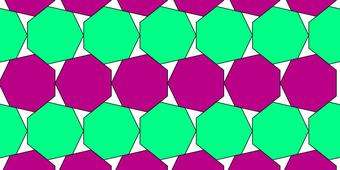Geometry's least-packable shapes

If you've ever struggled to pack a bunch of suitcases into the trunk of your car, you've got some idea of a basic problem in materials science: if you throw a bunch of atoms or molecules together, how do they fit together, and how densely can they be packed? In a new paper, Omidyar Fellow Yoav Kallus takes a small yet significant step toward answering those questions while at the same time addressing an old conjecture about what packs least well.
Kallus's results concern an area of mathematics known as packing problems, which range from easy ones like which shapes pack tightest—rectangular boxes—to the profoundly difficult. In the latter category is finding which objects pack loosest. In three dimensions, mathematician Stanislaw Ulam (one of SFI's founders) is said to have conjectured that even when packed as tight as can be, spheres leave more empty space between them than any other object, or at least any other that has no dimples or caves on its surface.
While that remains a conjecture, Kallus shows in a forthcoming paper in the journal Geometry and Topology that nearly-spherical objects fit together more closely than true spheres, lending new support to Ulam's idea—in three dimensions, that is. In two dimensions, Kallus says, "the natural first guess is the circle," but many shapes outdo circles. Octagons with rounded corners leave just under ten percent of the available space empty when packed as tight as can be. Heptagons are a bit worse still, but, Kallus shows, no corner-rounding can make them even worse.
The question remains, Kallus says, "given a particular shape, can you predict its densest packing?" Given the immense technical difficulties involved, researchers may be forced to forego rigorous mathematics in favor of computational approaches, but it may be possible to use those methods to rule out many options for the title of least-packable suitcase.
More information: "Pessimal packing shapes." Geometry & Topology 19 (2015) 343–363 DOI: 10.2140/gt.2015.19.343. On Arxiv: arxiv.org/abs/1305.0289
Journal information: arXiv
Provided by Santa Fe Institute




















